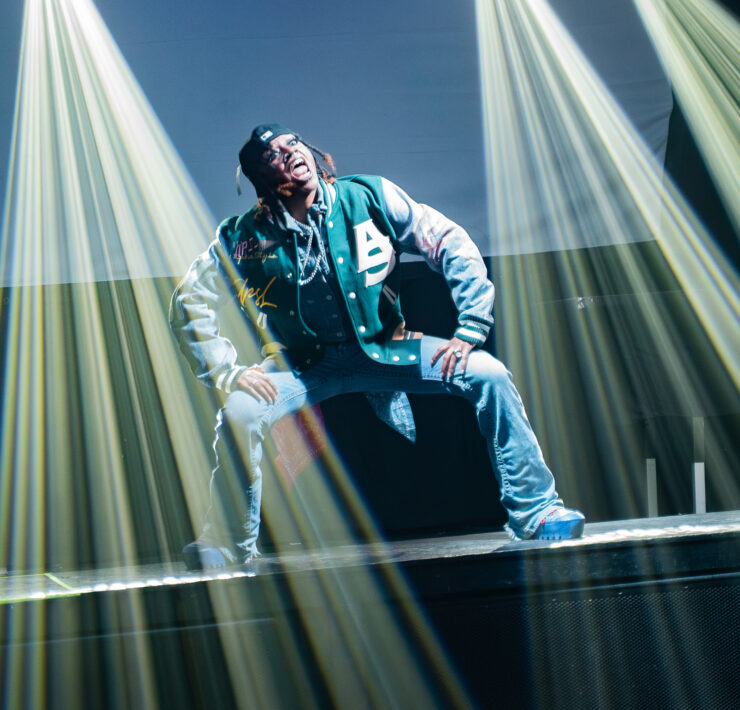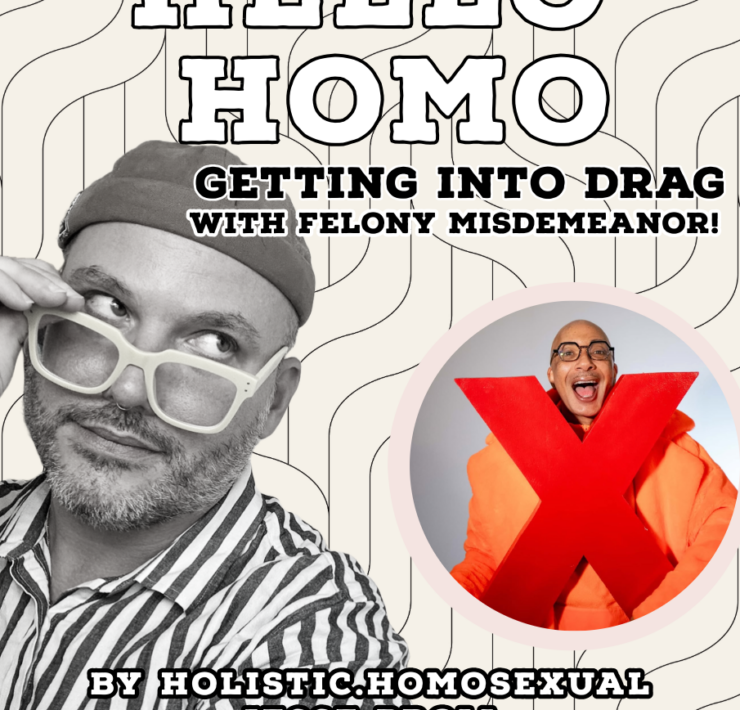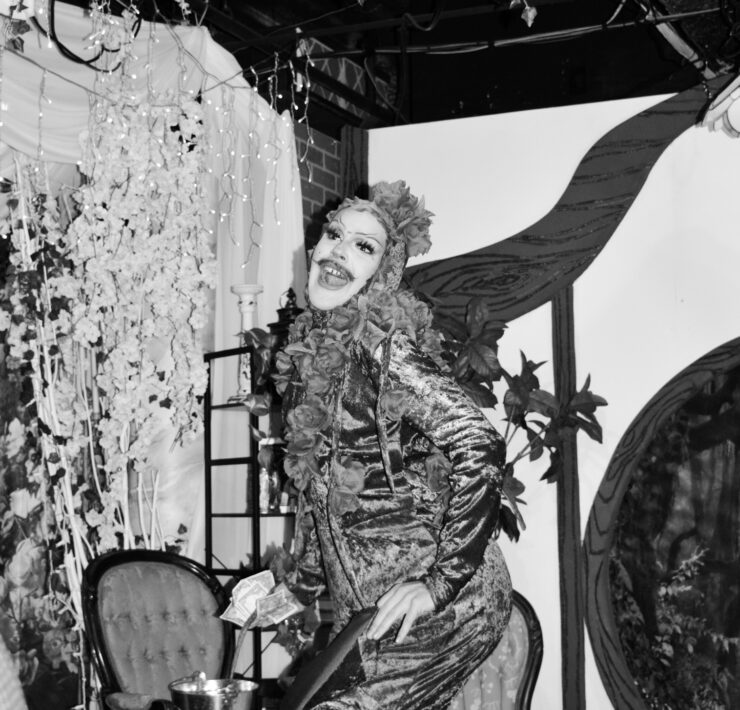Buddy Bravo: Queer Dance Parties, Kiki Balls, and the Drag Scene

Addison Herron-Wheeler is OUT FRONT's co-publisher and editor-in-chief and friend…
Buddy Bravo is known around town as a queer renaissance man excelling as a DJ, graphic designer, dancer, and queer event planner. He’s also one of the key players in the current surge of Denver Ballroom Scene interest, DJing balls and queer events like no other DJ in town. We talked with Buddy about the ways in which the ball scene has influenced our modern queer scene, how his role in queer nightlife has helped highlight ballroom in Denver, and what’s important to him when creating new, queer events in Denver.
How did you get involved with the ball community in Denver?
A few years ago, there was a brand-new, ball-inspired event at Tracks Night Club called Vogue Ball created by Morgan Taylor. He asked me to come in and provide music for the event. It wasn’t a major event ball that you’d see in larger ballroom communities, but it was a great way to get people in Denver interested in ballroom. I joined the group and provided music for the event. I was excited to join because ballroom and vogueing require a very specific type of music; there are specific songs; there are specific artists that you really should know if you want your ball or event to be taken seriously. It’s not just club dance music, so I was excited to help bring that to the show.
Related article: Strike a Pose- Vogue, Vogue, Vogue
After that show completed a season at Tracks, me and the group that helped develop The Vogue Ball decided to take that show and revamp it into something closer to what an actual ball would be. We created The Chanté Soírée Kiki Ball. A kiki ball is a great way for beginners and first timers to get experience compared to a major function ball, so we thought it was a good next step to take. The goal was to allow people a space to get used to being on the runway, get some experience performing, begin developing personas, and used to actually being in a battle and learning the rules of ballroom etiquette, along with providing rehearsal space and then eventually encouraging them to compete in a proper ball.
We created Chanté Soírée as a kind of bridge between a ‘ball-inspired event’ and an actual ball you’d find in bigger cities where ballroom was created. We had a team of five people, each person representing a different aspect of ballroom. One represented runway; someone represented face; someone represented performance, and then I was representing the music. We were all experts in each of our fields. We also all helped run open sessions for anyone looking for tips or rehearsal space. We really became a mini-family with people in the community.

How does a ball differ from a drag show?
First and foremost, the ballroom scene was created for, and by, black and trans people. So, that is the number-one priority, to allow black and trans individuals, disenfranchised even within our LGBTQ community, to really have a platform. In a ball, there are rules; as much as you can express yourself and be free about performance, there are still very strict guidelines. That’s something you wouldn’t see in a drag show. You wouldn’t see a drag artist’s performance get the chop in the middle of a number, but you would definitely see that at a ball! A chop is when you aren’t following the guidelines and need to be checked. Imagine a drag performer getting chopped for not knowing their words! I’m here for it.
Also, in the drag community, you pay your dues with longevity and participating in contests, pageants, or hosting your own show. In the ball scene, you get your accolades by competing in battles. So, when you say someone is legendary or you say someone is an icon, those are specific titles that they have earned based on their performance and scores in the ballroom. That’s how you get your reputation.
Related article: Pride is Extravagantly Female
I think one of the most important similarities is that both scenes offer room for self expression, blurring over gender roles, tradition, and age. There are no expectations except that you be yourself, or whoever you created, and slay while doing it. We’ve struggled, generally speaking, to be ourselves for so long, drag, ballroom, music, theater, all of it serves as a place for us to make up for years of holding it in.
How do you think the drag scene is influenced by the ball scene?
Definitely in dancing, terminology, and the music. Almost every other catchphrase you hear gays saying—and now even non-queers—originated in ballroom. “Tens across the board,” “reading,” “serving realness,” “shade,” they all come from ballroom. Also, the music in ballroom mostly was created for the ballroom by people in the ball scene and then finds its way into clubs and then drag numbers. It always starts underground first—often in the balls or clubs—then it trickles down into fashion, music, dance, everything.
Think of Dapper Dan, who is now considered high fashion, or Pose, which is still winning awards, or Dashaun Wesley, who has done work for prime-time TV projects. The culture is consumed now by the mainstream, myself included. I play ballroom music in clubs all the time. But you know what? Queer people have always been trailblazers and trend setters. We don’t follow crowds; we lead them.

What do you keep in mind when you curate a space?
I always want a space to feel inclusive and inviting with queer people as the priority, but also I always do everything I can to respect those who have been there before me. The most important thing about being a DJ is reading your audience and learning how to guide them into a specific mood. Also, as a queer DJ, I take my platform in the DJ booth as an opportunity to highlight other queer artists, producers, and songwriters. Denver musicians, please send me your stuff.
I love being able to support queer musicians and bumping their music. When I DJ my own events, like DramaClub Queer Dance Party, I consider the theme of the party, and the goal is to have fun with it, play things that feel good, deep tracks, and just a sprinkling of current bops. When I’m DJing, I love to make people laugh, smile, feel sexy, anything. I want the crowd to feel things and be surprised by the things that music can make you feel.
Photos by Buddy Bravo
What's Your Reaction?
Addison Herron-Wheeler is OUT FRONT's co-publisher and editor-in-chief and friend to dogs everywhere. She enjoys long walks in the darkness away from any sources of sunlight, rainy days, and painfully dry comedy. She also covers cannabis and heavy metal, and is author of Wicked Woman: Women in Metal from the 1960s to Now and Respirator, a short story collection.










